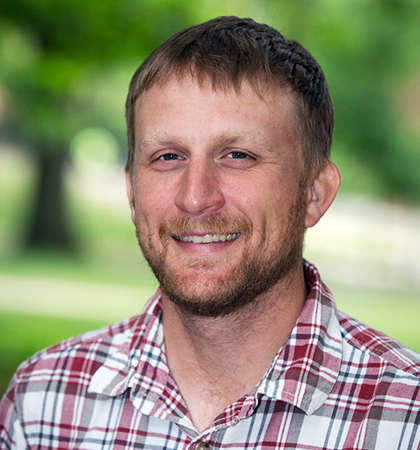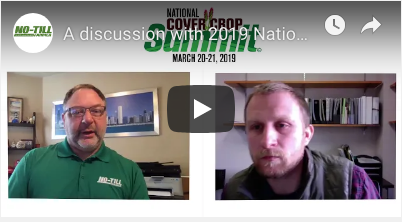
John Wallace
Growers that plan to integrate cover crops into their rotation will need to determine if their herbicide programs have the potential to reduce cover crop establishment success. The potential for herbicide carryover injury depends on the properties of various herbicides, weather and soil conditions, and the timing of cover crop seeding, says John Wallace, the weed scientist from Penn State University.
During the 2019 National Cover Crop Summit, March 20-21, 2019 — a free-to-attend online event featuring a series of knowledge-building sessions taught by the foremost authorities on covers today — John Wallace will discuss guidelines and principles on the conditions that increase the potential for herbicide carryover, highlight herbicide label considerations, and provide information on herbicide programs that enable fall-seeding cover crops and interseeding cover crops into standing corn, drawing on data from lead Extension weed scientists in various regions. Registration to attend the National Cover Crop Summit can be made at CoverCropSummit.com.
Wallace’s is one of several educational video sessions that will go live each day from March 20-21, allowing National Cover Crop Summit attendees the opportunity to choose the speakers and sessions they’re most interested in and participate on their own schedule. Attendees will also be able to ask questions during the presentation and get timely feedback from the speakers, enhancing the interactive and educational nature of this inaugural event.
The first 10 presenters to headline the National Cover Crop Summit have been announced, along with their session topics. A detailed overview of each presentation can be found CoverCropSummit.com.
Additional speakers for this event will announced in the coming weeks. The initial list of committed presenters and topics includes:
- Steve Groff, a cover crop consultant, Holtwood, Pa. — 5 Mindsets that Successful Cover Croppers Have in Common
- Shawn Tiffany, a rancher at Tiffany Cattle Co., Herington, Kan. — Improving Farm and Feedlot Soil Health with Cover Crops
- Erin Silva, University of Wisconsin, Madison, Wis. — Rolling Cover Crops Successfully in No-Till Systems
- Damon Reabe, a cover crop applicator and co-owner of Dairyland Aviation — Finding Success with Aerially Seeded Cover Crops
- Tom Cotter, a farmer from Austin, Minn. — Integrating Timely Interseeding of Cover Crops for Soil Health and Grazing Benefits
- Chris Teachout, a farmer from Shenandoah, Iowa — Realizing the Potential of Alternative Row Spacings and Biomass-Building Cover Crops
- Paul Delaune, Texas A&M Environmental Soil Scientist — Examining Cover Crop Benefits in Continuous Wheat and Cotton Rotations in a Semi-Arid Environment
- Rob Myers, Regional Director of Extension Programs — A 360-Degree Perspective on How Cover Crops Affect Farm Profitability
- John Wallace, weed scientist, Penn State University — Plan ahead: Will my herbicide program prevent successful cover crop establishment?
- Adam Dahmer, a farmer from Marion, Ill., — Turning 'Educational Experiences' into Successes with Cover Crops in Long-Term No-Till
An Interview with John Wallace

In a video interview, posted to the National Cover Crop Summit website, John Wallace discusses his presentation with Cover Crop Strategies senior editor, John Dobberstein.
Through the America Society of Agronomy (ASA) and Soil Science Society of America (SSSA), a total of 9 continuing education credits have been approved for the National Cover Crop Summit. A list of approved sessions and their credit eligibility can be found in the Frequently Asked Questions on the event website.
Title sponsors making the cover crop learning and networking opportunities possible include Montag Mfg., Fennig Equipment, Gandy, I&J Mfg., Underground Agriculture, Walnut Creek Seeds, LLC.




Post a comment
Report Abusive Comment